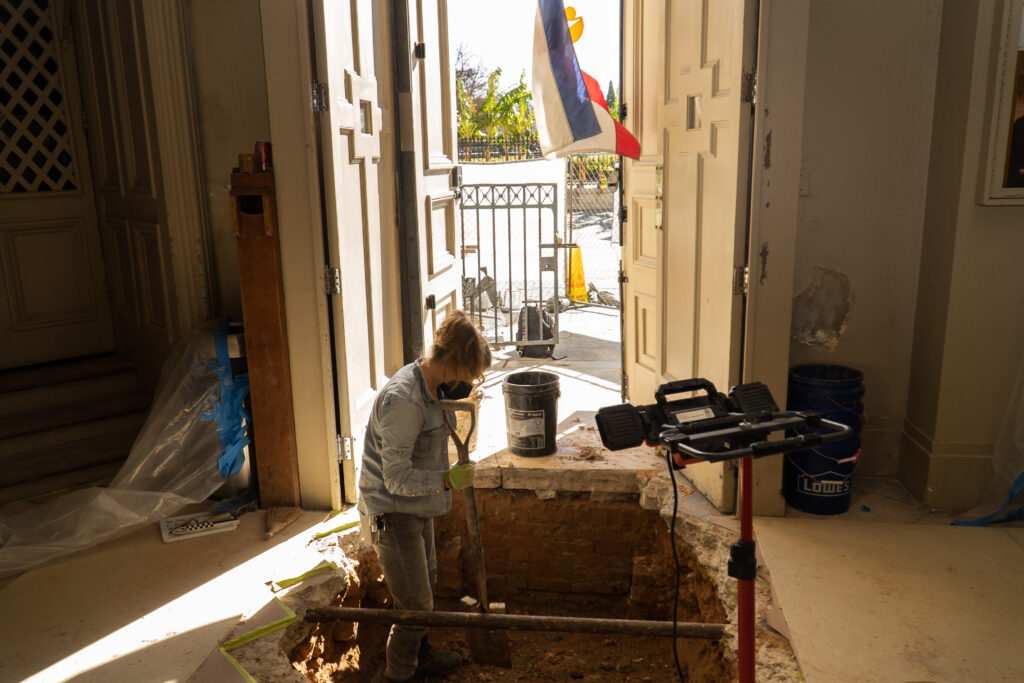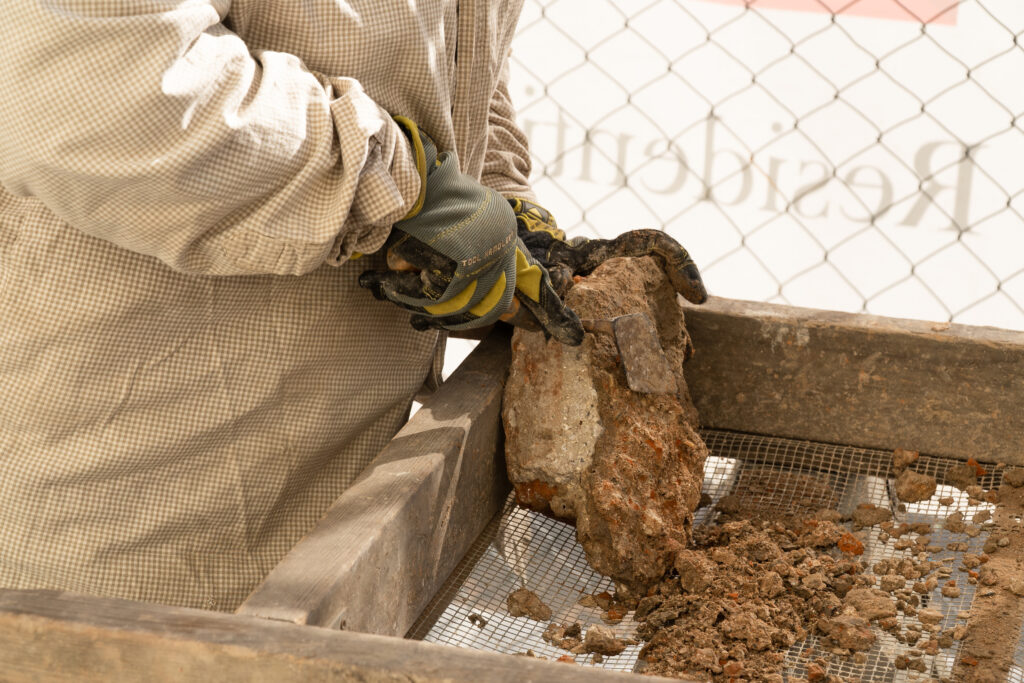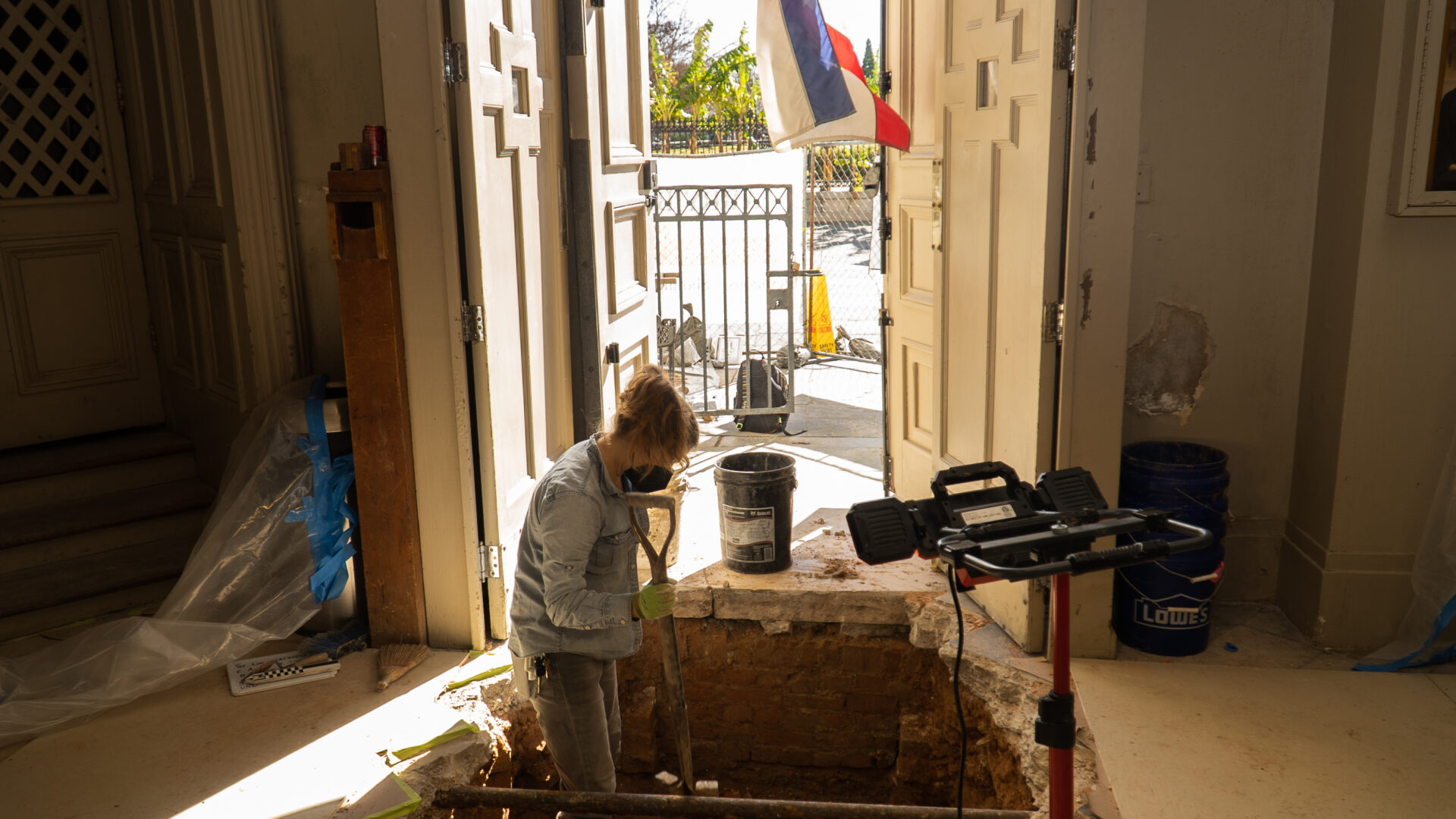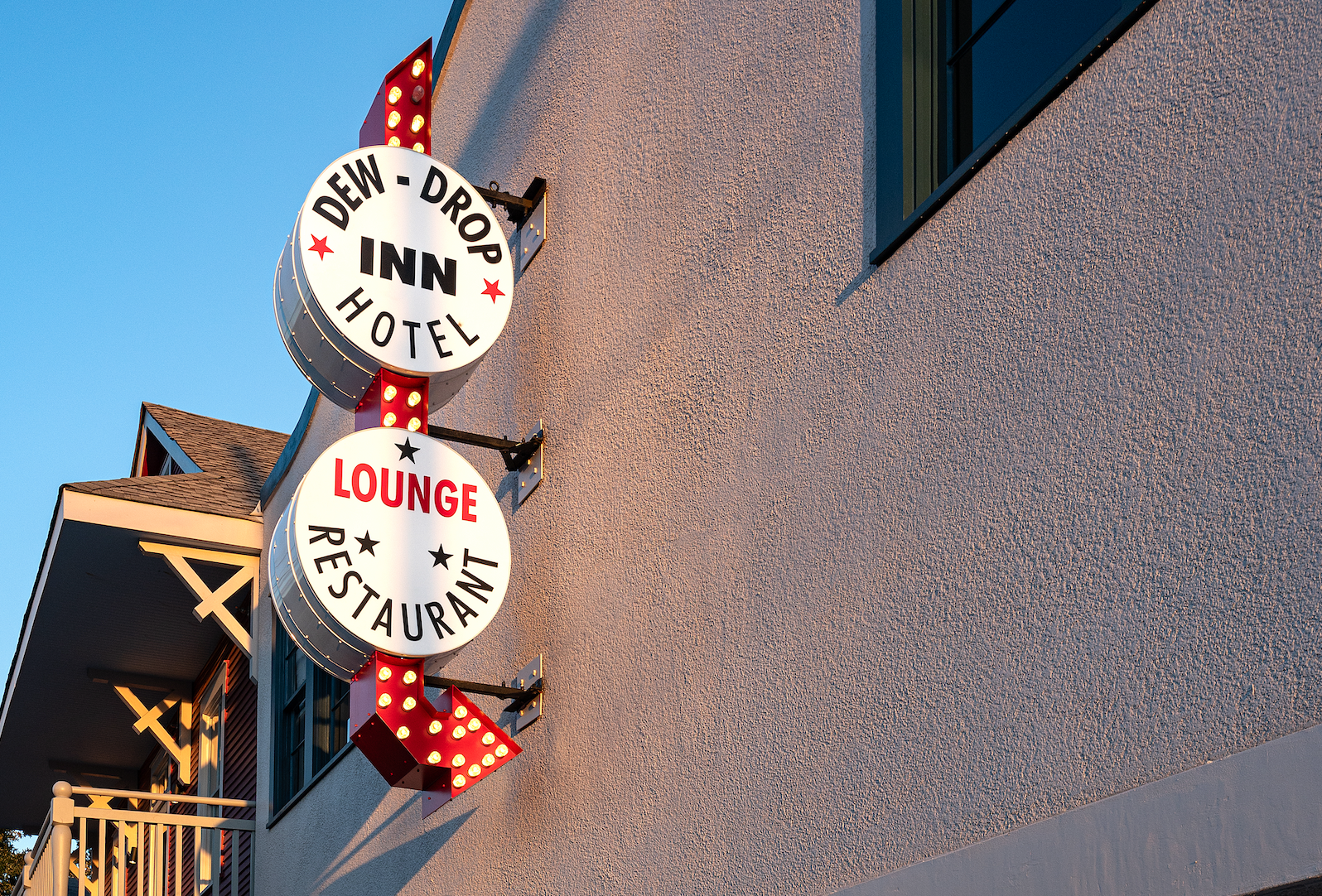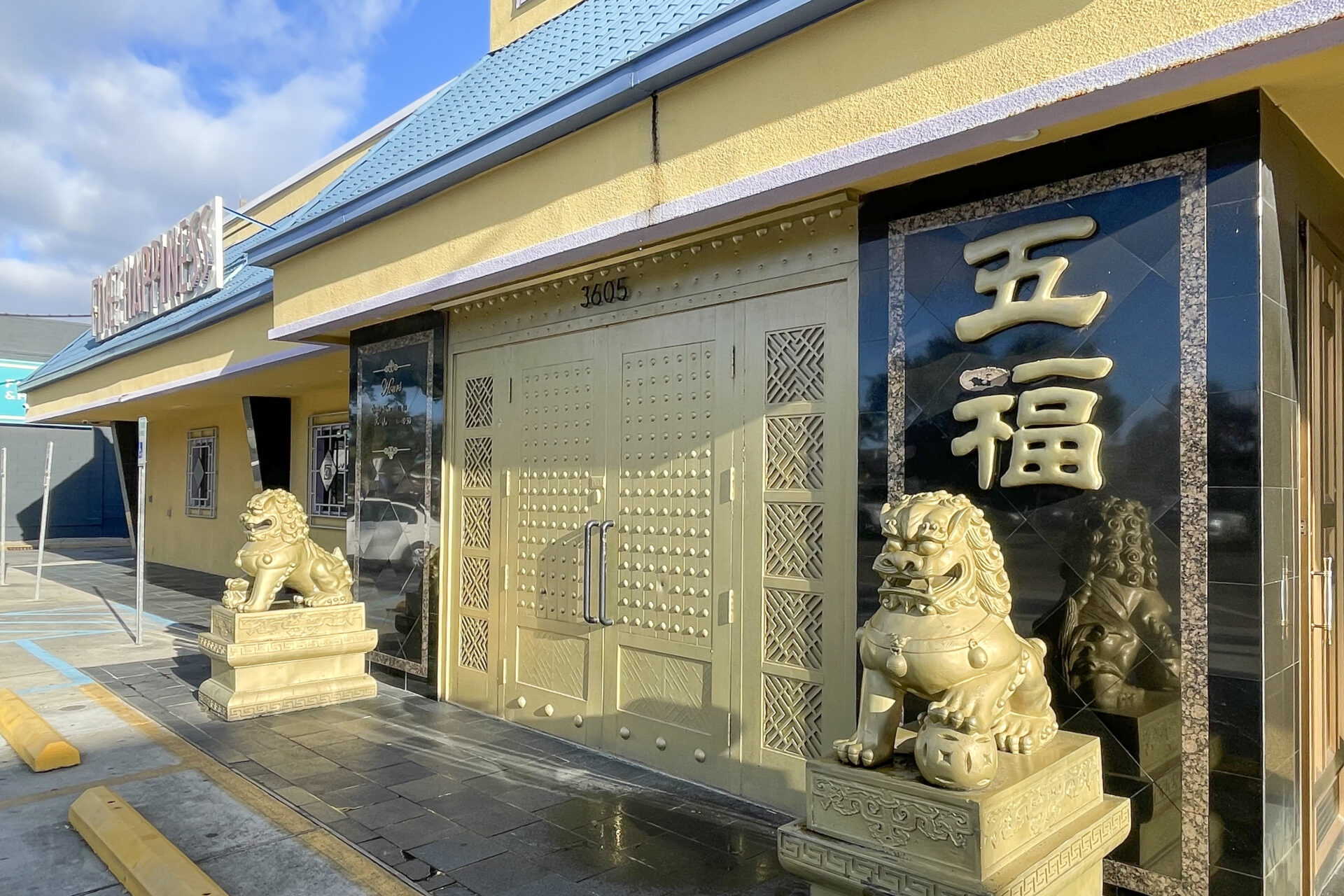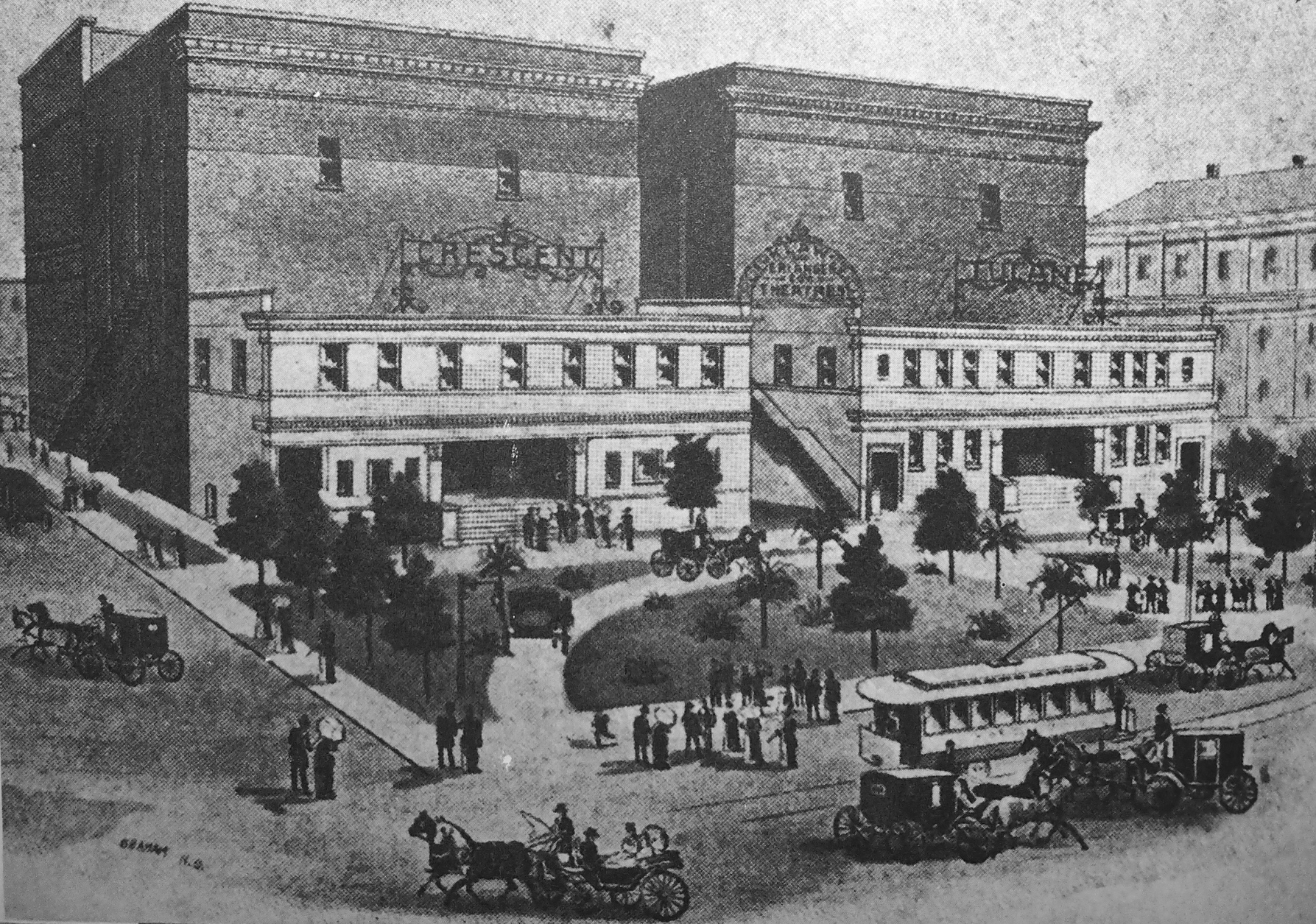This story appeared in PRC’s Preservation in Print magazine. Interested in getting more preservation stories like this delivered to your door? Become a member of the PRC for a subscription!
As an archaeologist who specializes in the City of New Orleans, I’m used to receiving calls and emails from people interested in the history of their property. Even so, I certainly wasn’t expecting to get the opportunity to see history preserved in the layers underneath one of the city’s best-known and most iconic buildings.
Just after Thanksgiving, I was contacted by Dr. Emilie Gagnet Leumas, former head archivist for the Archdiocese of New Orleans, about restoration work happening at St. Louis Cathedral. Preliminary studies for the restoration project were already underway, including efforts to assess the condition of the foundations of the 1849 building. This work had involved excavation.
As soon as we could arrange it, I was there, standing in rubber boots in a pit as deep as I was tall, looking at a section through the soil that spanned the entire timeline of New Orleans history.
It seems only appropriate that I begin a series of periodic articles on archaeology for Preservation in Print by discussing the project at St. Louis Cathedral, a building that many consider the symbolic center of the city. This project is exceptional, both for its location and for the fact that project managers allowed archaeologists access. This is often not the case, as archaeology doesn’t have to be considered in privately funded projects, even in such a sensitive location. Section 106 of the National Historic Preservation Act requires that federal agencies (or those receiving federal funding or some types of federal permits) take into account the effects of their undertakings on historic properties eligible for the National Register of Historic Places, a category that may include archaeological sites. There is a lot to unpack in that language, and occasional controversies arise from it.
However, since no local level protections exist for archaeological resources in New Orleans — the Vieux Carré Commission and the Historic District Landmarks Commission consider their jurisdictions to end at the ground surface — this means that on private, city and even state property, there are no requirements to address what’s below ground.
Work on a historic building is complex and expensive as it is, and archaeological projects may be time-consuming, messy and costly. There are private firms that deal with compliance-based archaeology, but they are not structured to address smaller scale, privately funded or pro bono archaeological investigations. Even a small excavation may generate thousands of artifacts, which may in turn require specialists to analyze properly. And while anything found on private property in Louisiana belongs to that property owner, for a project to be archaeology and not unscientific relic hunting, it must be documented and reported properly.
This is where an institution like the Department of Anthropology and Sociology at the University of New Orleans (of which I’m a part) comes in. Through this column, I’ll discuss projects in which we have assisted property owners and institutions with their archaeological concerns.
In the case of St. Louis Cathedral, the archaeology is just one small, but important, piece of the puzzle. The firm of Holly and Smith Architects is leading the preliminary study for the restoration of the cathedral, with Morphy, Makofsky Inc., consulting on the structural engineering, and Abry Brothers, Inc., working on exposing and assessing the foundations. The project is supported by the Catholic Community Foundation and the Our City, Our Cathedral Campaign, championed by Gayle Benson.
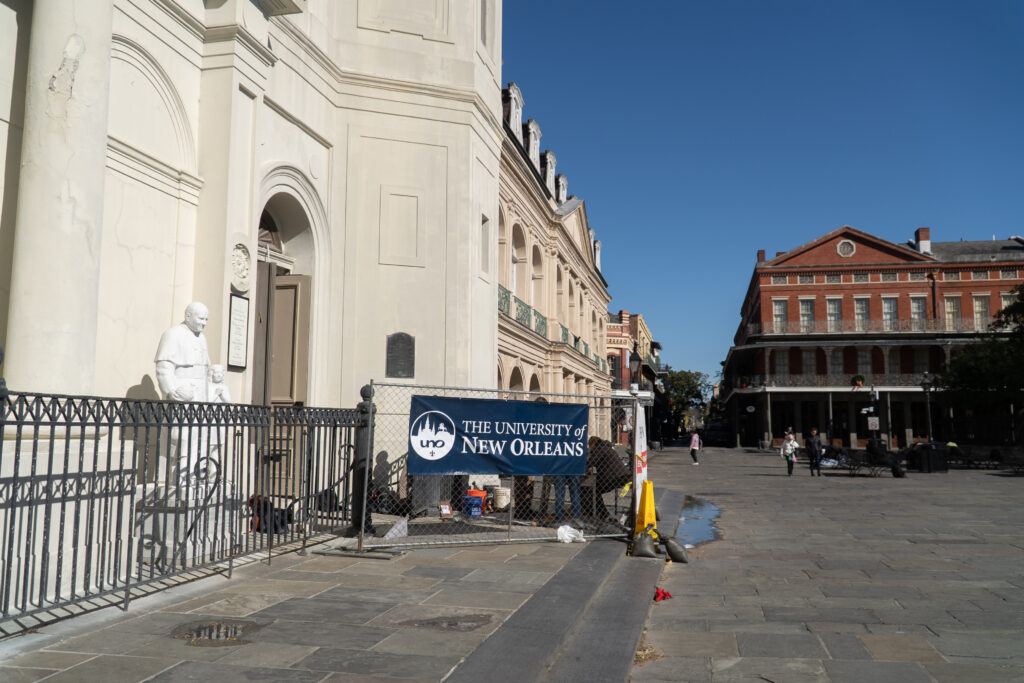
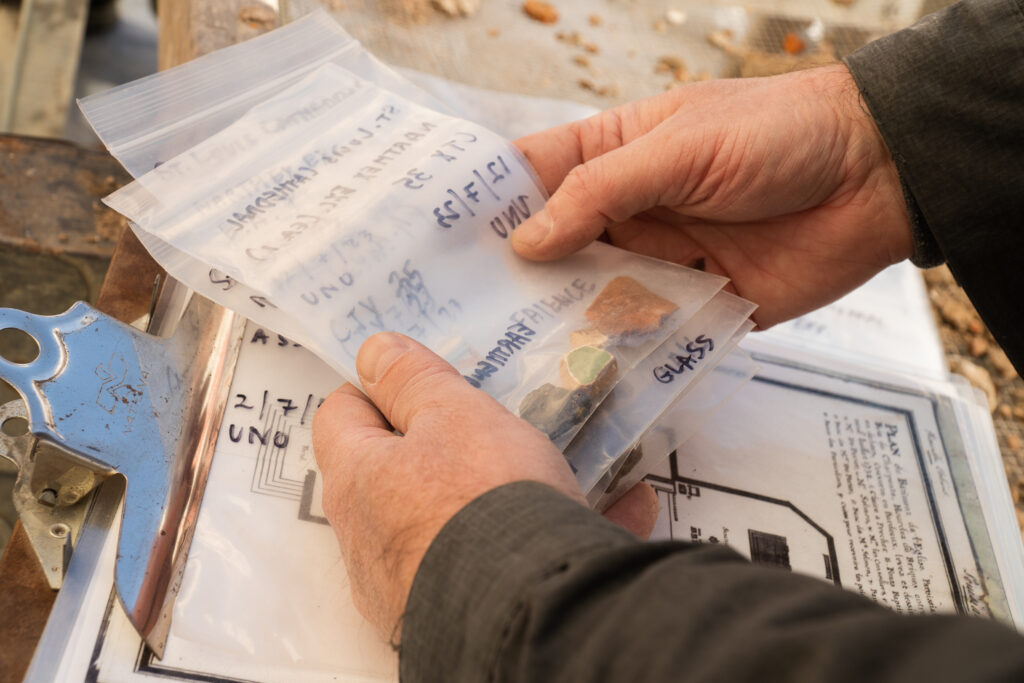
Once it became apparent that there were 18th-century layers preserved beneath the cathedral, the principals involved in the project, to their credit, have embraced the opportunity to document what is there. They could have simply backfilled excavations and moved on. After all, this is what happens all the time, on construction sites all over the city.
The archaeological study of the excavations at the cathedral is only just getting started. Through historical documents and maps, including many compiled by the late architect Samuel Wilson, Jr., we know that a church was planned for the location now occupied by St. Louis Cathedral within a few years of the city’s founding. However, a permanent church was slow to take shape.
The Parish Church of St. Louis designed by engineer and cartographer Adrien de Pauger in 1724 (the design is preserved in the Archives Nationales d’Outre Mer in France) was completed in 1727. Like many buildings constructed in the French briquette-entre-poteaux method, it deteriorated rapidly and was the subject of a series of renovation efforts, until it burned completely in the Good Friday Fire of 1788. A rebuilt cathedral on a larger footprint hosted its first Mass in December of 1794, but it too quickly became obsolete. It was rebuilt wholesale from 1849 to 1850, after a plan to incorporate the old front wall into the new church resulted in a catastrophic collapse.
These key moments leave an imprint in the sequence of layers visible in excavation walls, but even more importantly for archaeologists, so do smaller, less-noted aspects of the social history of a site. Before drainage infrastructure and street surfaces were made permanent, anything that filled a lot or raised its level was an advantage. Thus, anywhere in this part of the French Quarter, one can find two meters or more of cultural layers built up from what would have been the ground surface at the beginning of the 1700s. This is now lower than the water table, and the mucky, clayey soils left behind after water is pumped away can be challenging to sort through to find artifacts, especially small ones.
Even based on preliminary analyses, there is much to learn from the excavations. Already, it is clear that the remains of de Pauger’s church still exist beneath the modern foundations. A midden (or refuse layer) from the 1720s includes bits of French and Indigenous pottery, tiny pieces of fish bone representing the remnants of a forgotten meal, pieces of clay smoking pipe, and numerous brass straight pins, perhaps reflecting that the windows of the 1727 church were covered with tightly stretched pieces of fabric when there were no panes of glass available in the colony.
A herringbone-patterned floor associated with the 1794 cathedral is preserved as well, and it overlies debris from the 1788 fire and overlapping foundations that document the renovations and alterations to the de Pauger church between 1727 and 1788.
We’re documenting the excavations with both traditional methods like scaled drawings and notes, but also with photogrammetry, used to create 3D models and digital orthophoto mosaics. These 3D models can be printable, meaning that, with the proper equipment, one could create a miniature version of one of the excavations or of the cathedral’s 1794 floor. The archaeology will undoubtedly produce new questions, and we work with the Archdiocese’s Office of Archives and Records to keep whatever is uncovered in conversation with historical documents. Artifacts will be cleaned, special samples processed and preserved.
In this column, I’ll report on both high-profile projects like St. Louis Cathedral and ones in more out-of-the-way locations that bring microhistories and forgotten people into focus. I’ll look at the legal aspects of archaeology, its often-ignored place in the Federal Historic Places Tax Incentive program, and how it can address mysteries, big and small, about a property’s history, even as it generates new ones.
The archaeological legacy of New Orleans is disappearing on a daily basis. In a city that trades so much in its past, it time to consider how we manage and preserve this past more effectively.
Dr. D. Ryan Gray is the chair of Anthropology and Sociology and Associate Director of the Midlo Center for New Orleans Studies at the University of New Orleans.
